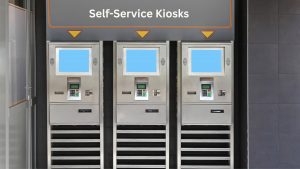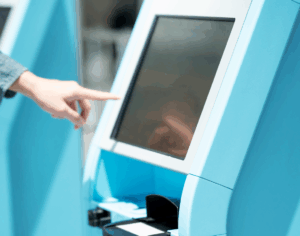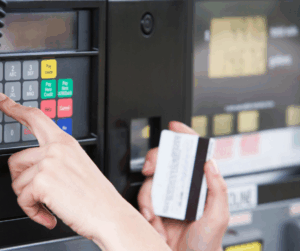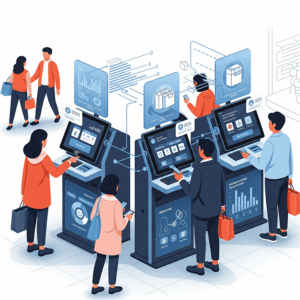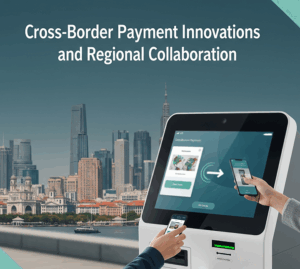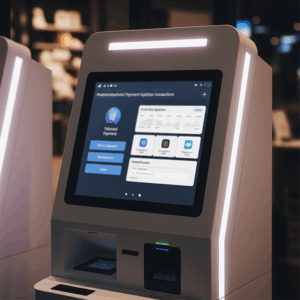
News & Updates

Trends in Singapore’s Digital Payment Transformation
Singapore’s digital payment transformation is accelerating rapidly in 2025, with the primary focus on seamless, secure, and intelligent transaction experiences across every sector. As businesses, public agencies, and service providers embrace digital-first models, real-time payments, contactless solutions, and AI-powered platforms have become central to the city- state’s Smart Nation ambitions. This shift is not just about new technology it’s about reshaping how enterprises operate, how citizens interact with services, and how organisations meet evolving regulatory and consumer expectations. In this article, we explore the five most significant trends defining Singapore’s digital payment evolution in 2025, offering practical insights for organisations seeking to thrive in this dynamic environment.
From the integration of instant payment platforms to advances in security, AI-driven personalisation, and regional payment connectivity, we examine how these trends are creating opportunities and setting new benchmarks for operational excellence and user satisfaction.
Seamless Integration of Real-Time Payment Platforms
The demand for instant, transparent financial transactions is redefining Singapore’s payment landscape. Real-time payment platforms are now a business imperative, driven by both consumer expectations and government-led digitalisation efforts. Enterprises and public sector bodies are moving beyond traditional payment methods, integrating systems that enable immediate fund transfers, automated reconciliation, and direct connections between banks, e-wallets, and government e-services. This shift is streamlining processes, reducing operational delays, and supporting an ecosystem where speed and transparency are the norm. Regulatory directives are also steering organisations to adopt unified payment rails, ensuring compliance while promoting interoperability across a diverse financial environment.
For organisations, the benefits extend beyond mere convenience. Real-time payment integration is now tightly woven into enterprise resource planning (ERP) and service automation, enabling not only faster collections but also improved customer engagement. Whether it’s a healthcare provider reducing billing cycles or a public agency enabling on-the- spot licensing payments, the ability to process funds instantly translates to measurable efficiency gains. As the market matures, the expectation is that real-time payments will underpin all core business processes, setting a new standard for responsiveness and service excellence.
Expanding Instant Payment Ecosystems
Singapore’s instant payment infrastructure including PayNow, FAST, and QR-based platforms is evolving rapidly. These systems, once largely confined to retail transactions, are now being integrated into enterprise workflows through open APIs. This means organisations can embed payment capabilities directly into their ERP, queue management, or appointment scheduling platforms, supporting seamless transactions at every customer touchpoint. By reducing manual intervention and enabling automated, real-time settlements, businesses are seeing faster cash flow, fewer errors, and stronger customer trust. The expansion of these ecosystems is particularly evident in sectors like healthcare and public administration, where speed and operational transparency are critical.
Interoperability Across Public and Private Sectors
Unified payment interfaces are dissolving longstanding silos between banks, fintech firms, and government agencies. A clear example is the growing ability for citizens and businesses to settle healthcare bills, licensing fees, or public service charges through a single real-time platform, regardless of the payment provider. This interoperability reduces administrative effort, cuts down on reconciliation time, and creates a more user-friendly experience. For organisations, the result is less time spent on manual processing and more resources available for strategic initiatives. Such seamless integration is becoming a benchmark in Singapore’s digital transformation journey, supporting both compliance and operational agility.
Rising Adoption of Self-Service Kiosks and Contactless Payments
Automation is now central to Singapore’s vision of efficient, user-centric service delivery. Across healthcare, transportation, and public services, self-service kiosks and contactless payment modes have become commonplace, transforming how people transact and interact with service providers. These technologies not only meet consumer demand for speed and convenience but also address ongoing health and safety considerations. The adoption of digital kiosks and touchless payment terminals is empowering organisations to deliver consistent, high-quality experiences, while freeing up staff to focus on more complex or value-adding tasks.
For businesses and agencies, the integration of self-service and contactless payments is about more than just modernising the front desk. It’s a strategic move that streamlines workflows, reduces operational bottlenecks, and supports higher throughput especially in high-traffic environments like hospitals, train stations, and government offices. With platforms such as ATT™’s Kiosk Operation Solution and Payment Services Solution, organisations are able to deploy modular, multi-payment kiosks that suit various spatial and operational needs. The result is a measurable improvement in efficiency, accuracy, and customer satisfaction, setting a new benchmark for digital service delivery in Singapore.
Connect with us for a demo at infosoft-sales@attsystemsgroup.com
Smart Kiosks Powering Autonomous Transactions
Smart kiosks are now a fixture in Singapore’s service landscape, equipped to handle a wide range of payment options cards, e-wallets, and mobile apps. These kiosks are engineered to minimise wait times and streamline the customer journey, from registration through to transaction. By automating routine interactions, organisations are reducing human errors,
enhancing data accuracy, and allowing staff to concentrate on more critical roles. ATT’s Kiosk Operation Solution, for instance, demonstrates how modular kiosks can adapt to different formats and environments, making them ideal for both large public facilities and smaller private premises.
Contactless Solutions for Public Health and Convenience
The preference for contactless payment has become deeply embedded in Singapore’s payment culture. NFC-enabled terminals and QR code-based solutions provide hygienic, touch-free alternatives that instil confidence in users and align with public health guidelines. Whether in retail, transport, or healthcare, these technologies offer speed and security without the need for physical contact. As a Smart Nation leader, Singapore continues to invest in digital infrastructure that supports widespread adoption of contactless payments, further reinforcing the city-state’s commitment to safety, convenience, and operational resilience.
Case Study: Integrated Queue Management and Payment
Healthcare institutions across Singapore are showcasing the benefits of integrating queue management and payment systems. By allowing patients to register, wait, and pay all through a single kiosk or mobile device, these solutions accelerate patient flow and significantly improve satisfaction. For example, combining ATT’s Q’SOFTÒ Enterprise Queue Management System with its Payment Services Solution enables clinics and hospitals to automate every step of the patient journey, from check-in to billing. This holistic approach not only reduces bottlenecks and administrative workload but also enhances resource allocation and reporting accuracy, demonstrating the tangible impact of digital payment transformation in real-world settings.
ATT’s Enterprise Queue Management System is also available in SaaS. Connect with us at Infosoft-sales@attsystemsgroup.com
Enhanced Security and Regulatory Compliance in Digital Payments
As Singapore’s digital payment volumes soar, so too does the focus on security and compliance. Regulatory frameworks are continuously evolving to address emerging risks, with the Monetary Authority of Singapore (MAS) and other agencies setting stringent standards for data protection and transaction integrity. Enterprises are responding by implementing robust digital identity verification, leveraging biometric authentication, and aligning with internationally recognised security protocols. This dual emphasis on security and compliance not only safeguards transactions but also builds trust with users and stakeholders, reinforcing Singapore’s reputation as a secure digital economy.
Organisations are also investing in advanced monitoring, encryption, and audit trail solutions to meet local and international requirements. These measures are particularly relevant for sectors handling sensitive or high-volume transactions, such as healthcare, government, and financial services. By adopting ISO/IEC 27001 and PDPA-aligned frameworks, businesses can demonstrate commitment to data security while ensuring compliance with regulatory guidelines. The result is a payment ecosystem where both operational risk and reputational risk are effectively managed, creating a stable foundation for continued digital innovation.
Strengthening Digital Identity Verification
The adoption of biometric authentication and Singpass-based login flows is now standard across many digital payment platforms in Singapore. These technologies validate user identities, prevent fraud, and streamline onboarding processes. For example, facial recognition or fingerprint scans can be used to authorise payments, while Singpass integration simplifies access for both locals and residents. This approach not only enhances transaction security but also makes digital systems more accessible to users of all ages, supporting Singapore’s goal of inclusive digital transformation.
ISO Standards and Data Protection
Compliance with ISO/IEC 27001 and the Personal Data Protection Act (PDPA) is now a baseline requirement for organisations operating in Singapore’s digital payments sector. These standards mandate robust encryption, comprehensive audit trails, and strict data access controls. By adhering to these protocols, organisations can assure clients and regulators that their financial and personal information is well-protected. Additionally, alignment with MAS guidelines provides further confidence, particularly in sectors where data sensitivity and regulatory oversight are paramount. This focus on security and compliance is essential for sustaining trust as digital payment adoption continues to grow.
AI-Driven Personalisation and Predictive Payment Solutions
Artificial intelligence is at the forefront of Singapore’s payment transformation, enabling smarter, more responsive, and personalised payment journeys. AI-driven platforms are now integral to how organisations manage billing, detect fraud, and engage users with tailored offers and communications. By harnessing machine learning and predictive analytics, businesses can anticipate customer needs, optimise resource allocation, and deliver seamless, data-informed experiences that drive both satisfaction and operational efficiency.
These innovations are particularly impactful in sectors with high transaction volumes and complex workflows, such as healthcare, retail, and public services. ATT’s Online Resource Booking System, for instance, leverages AI-driven scheduling logic to optimise appointment allocation and manage resource constraints in real time. As payment platforms become more intelligent, organisations are able to provide value-added services, support upselling, and enhance user engagement creating a cycle of continuous improvement and innovation.
Personalised Payment Experiences
Modern payment systems in Singapore now use AI algorithms to analyse transaction data and deliver targeted offers, reminders, and flexible billing options. For example, a healthcare provider might send tailored payment reminders based on patient preferences, or a retailer could promote relevant add-ons during checkout. This level of personalisation not only increases user engagement but also supports cross-selling and upselling opportunities across industries. By anticipating individual needs and behaviours, organisations can create frictionless payment journeys that build loyalty and trust.
Predictive Analytics for Resource Planning
AI-powered payment platforms are revolutionising how organisations plan and allocate resources. By forecasting peak demand periods, predicting no-shows, and adjusting staffing or appointment slots accordingly, these systems drive significant efficiency gains, especially in busy sectors like healthcare or public administration. For instance, ATT’s Online Resource Booking System uses predictive analytics to ensure optimal resource utilisation and reduce bottlenecks. This proactive approach to resource management not only improves operational performance but also translates to better user experiences and higher satisfaction rates.
Cross-Border Payment Innovations and Regional Collaboration
Singapore’s ambition to serve as a regional payment hub is being realised through cross- border payment initiatives and collaborative partnerships across Southeast Asia. Recent innovations enable seamless, low-cost transfers between Singapore and neighbouring countries, supporting businesses, consumers, and government agencies operating across borders. This connectivity is not only vital for trade and tourism but also underpins the city- state’s broader Smart Nation and digital economy strategies.
Cross-border payment projects, championed by the Monetary Authority of Singapore (MAS), are setting new standards for interoperability and efficiency. By connecting domestic payment systems with those in countries like Thailand and Malaysia, Singapore is enabling real-time, multi-currency transfers that reduce costs and speed up settlements. Enterprises and financial institutions are also adopting platforms that support a wide range of regional e- wallets and currencies, making it easier to manage international transactions and collections.
These advances are reshaping the regional financial landscape, positioning Singapore as a leader in digital payment innovation and collaboration.
Linking National Payment Systems
Interoperability projects led by the MAS have successfully linked Singapore’s PayNow platform with regional payment schemes, such as Thailand’s PromptPay. This integration allows for instant, low-fee transfers in local currencies, significantly improving the ease and affordability of cross-border transactions. Businesses benefit from faster settlements and lower administrative costs, while consumers enjoy greater convenience and transparency. These initiatives are particularly impactful for sectors reliant on regional trade, tourism, or remote work, reinforcing Singapore’s role as a payment innovation hub in Southeast Asia.
Supporting Multi-Currency and E-Wallet Solutions
To meet the demands of a regional and global clientele, enterprises and financial institutions in Singapore are turning to payment platforms that facilitate multi-currency transactions and support diverse e-wallets. This capability simplifies payment collection and reconciliation for businesses with cross-border suppliers or customers, reducing friction and enhancing operational agility. As digital payment ecosystems expand, support for regional e-wallets and currencies will be an essential feature for any organisation seeking to compete in Southeast Asia’s interconnected economy.
Preparing for the Next Phase of Digital Payment Excellence
Singapore’s digital payment transformation in 2025 is defined by seamless integration, intelligent automation, and unwavering security. By adopting real-time payment platforms, embracing AI-driven personalisation, and maintaining rigorous compliance with security standards, organisations are well-placed to deliver outstanding payment experiences that underpin growth and resilience.
As the digital landscape continues to evolve, partnering with trusted technology providers like ATT Group ensures readiness for the next wave of innovation empowering businesses and agencies to create value, enhance operational efficiency, and contribute to Singapore’s ongoing journey as a Smart Nation leader.
Send us a message
Contact Information
Address:
35 Ubi Crescent, ATT Building, Singapore, 408585
Phone:
Email:
Website:
www.attsystemsgroup.com



